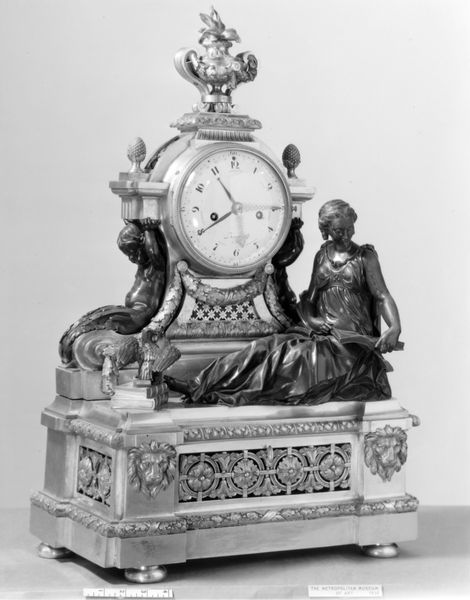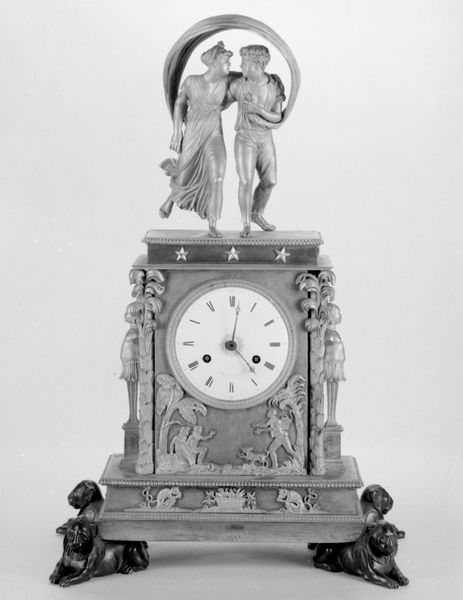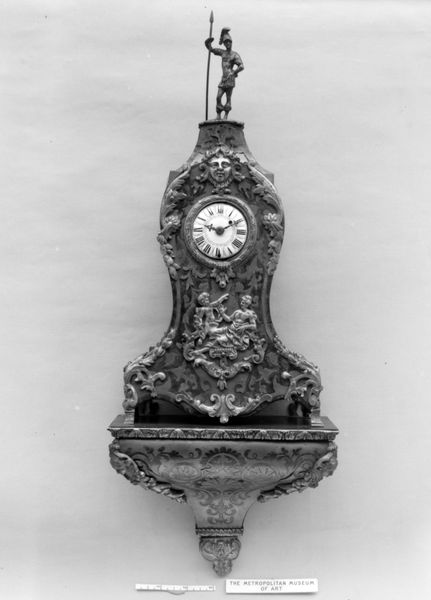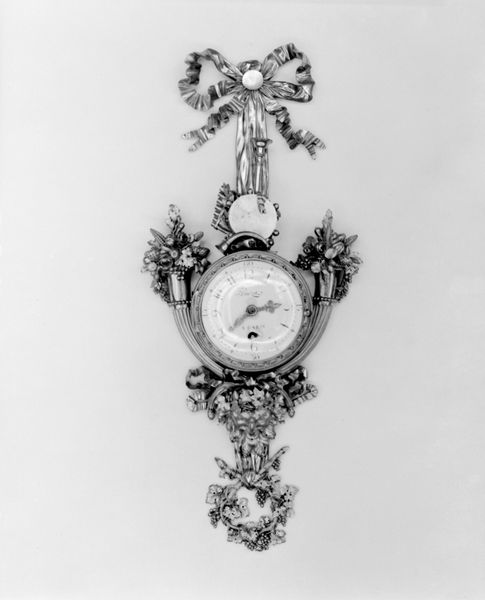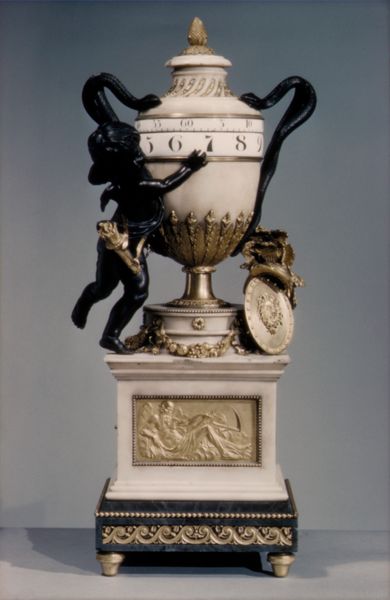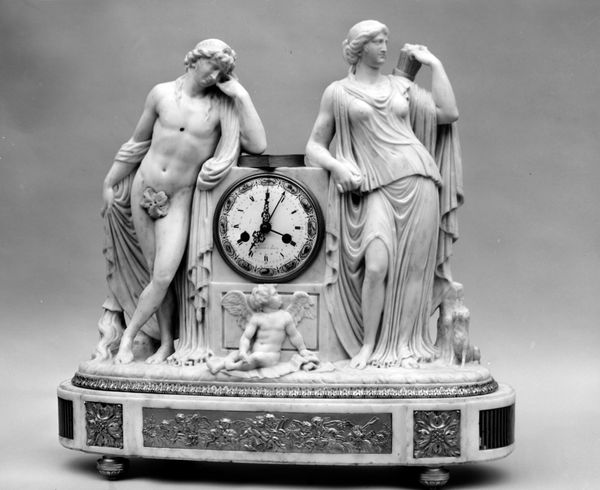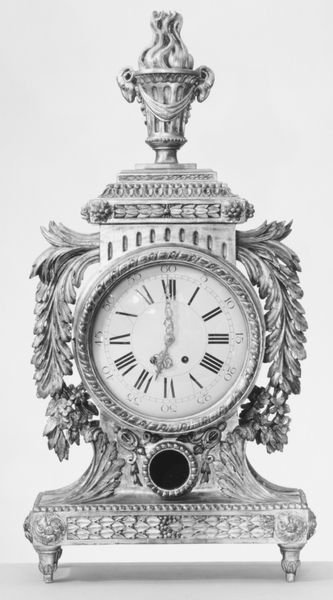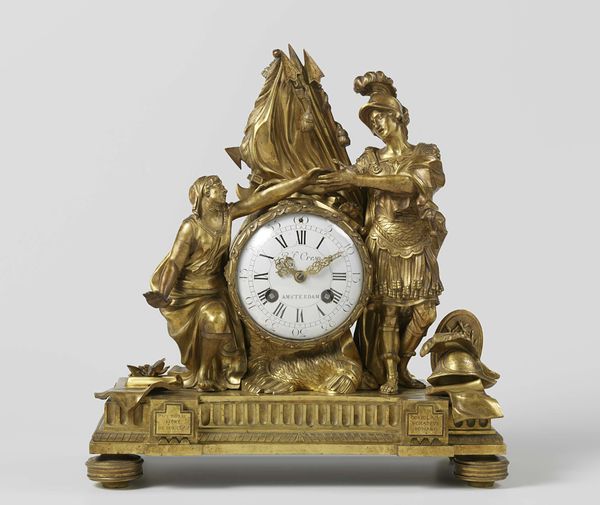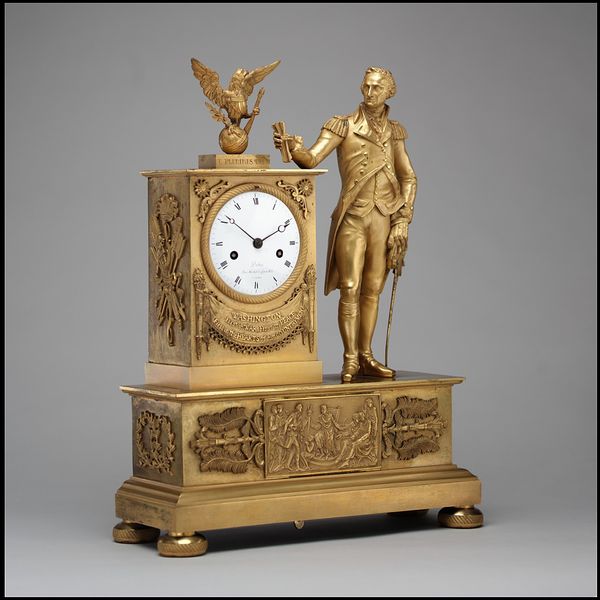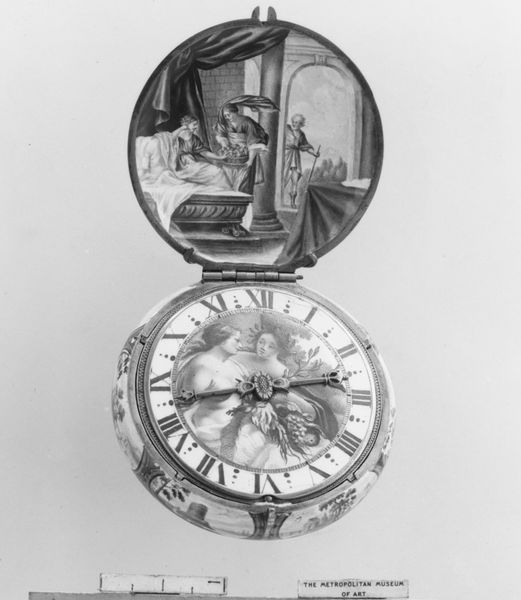
Dimensions: 16 3/4 × 14 3/4 in. (42.5 × 37.5 cm)
Copyright: Public Domain
Curator: Here we have a stunning example of late 18th-century decorative art: a mantel clock featuring Venus and Cupid, crafted between 1777 and 1796, likely in France. Editor: It's striking! There's a playful dynamism about it. Venus is perched almost casually, while Cupid seems to be reaching towards… are those birds? Curator: Indeed. They seem to be tethered, suspended in flight—perhaps symbolic of Love's fleeting nature or being tied to Venus. Made of bronze, with this creamy marble base, the sculpture work, which some attribute to Renacle-Nicolas Sotiau, has the kind of flair favored by those seeking more decorative displays. How do the mythological figures speak to you? Editor: Well, seeing Venus presented like this evokes thoughts of idealized beauty during the Rococo period, but also raises questions about power dynamics and social expectations around love and marriage in that era. Curator: An interesting tension to note given the material’s implicit relationship to temporality through the object's function. The figures embody classic beauty, yet time marches forward. Also Cupid's presence is significant. Often representing desire and affection, here he is very active and reaching toward Venus who, while prominently positioned, appears more static, contemplative perhaps? It's an active image inviting readings that challenge sentimental readings. Editor: Definitely. We're looking at how objects reinforce status but also play within established systems of representation. Notice the details on the base, miniature sculptural vignettes which suggest wealth and sophistication which only certain sections of the 1790’s population possessed. What might be implied in associating idealized and timeless images from Greek mythology alongside everyday displays of social currency. Curator: So true. I appreciate the suggestion that time is also on display. Each glance reveals not merely the hour, but the era, power, wealth, and love under constant negotiation. Editor: Absolutely! This clock does far more than tell time; it chronicles its era, prompting us to examine the forces that shaped it, forces of cultural and economic power still resonant today.
Comments
No comments
Be the first to comment and join the conversation on the ultimate creative platform.
